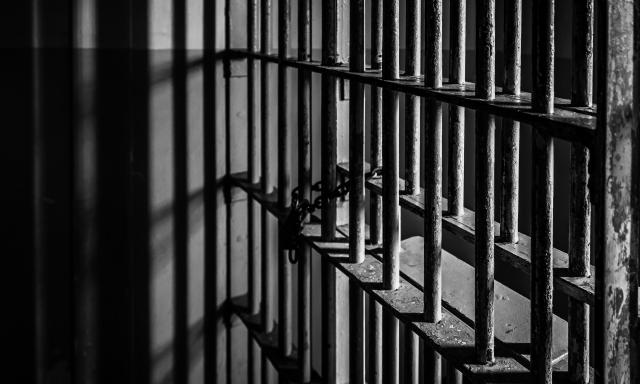

 Article
Article

 Lessons in philanthropy, investment and innovation: Rikers Island needed $10 million for a program to reduce the rate of teenage inmates returning to prison. With the innovative financing structure of the U.S.’ first social impact bond, New York, Goldman Sachs and Bloomberg Philanthropies leveraged private capital toward social solutions.
Lessons in philanthropy, investment and innovation: Rikers Island needed $10 million for a program to reduce the rate of teenage inmates returning to prison. With the innovative financing structure of the U.S.’ first social impact bond, New York, Goldman Sachs and Bloomberg Philanthropies leveraged private capital toward social solutions.

Could a financial institution invest in solving some of the nation’s biggest social challenges — and reap a return? This was a question Goldman Sachs faced when approached to invest in a program to reduce recidivism among teenage inmates at New York City’s Rikers Island prison. The program supported cognitive behavioral therapy, which had been shown to significantly reduce recidivism for these inmates, and in doing so, lower operating costs for prisons. If Goldman Sachs invested in the roughly $10 million program, it could reap a return paid from New York City’s operating cost savings, estimated to be in the millions. But there was risk, too — if recidivism didn’t drop by 10 percent or more, the city wouldn’t have to repay Goldman. Bloomberg Philanthropies — which was dedicated to help troubled youth — stepped up to facilitate the public-private partnership. The players agreed to share the risk through a social impact bond, the first in the United States.
Rikers Island, also known as “the rock,” is New York City’s main jail complex located on an island in the East River. With 10,000 inmates, Rikers Island is one of the world’s largest and most costly prisons, with an annual outlay of $167,000 per prisoner per year. New York City estimated that reducing the number of juveniles returning to prison by at least 20 percent could yield $20 million over the long haul, but a decrease of less than 10 percent did not generate enough savings to justify full repayment of Goldman’s investment, let alone a return. For Goldman, the investment had some attractive fundamentals: 90 percent of juveniles housed at Rikers were nonviolent offenders. However, Goldman also faced substantial risks: The therapy wouldn’t fix the entrenched social problems (poverty, addiction, truancy, domestic violence) that lead to reincarceration. Taken together, the targeted reduction in recidivism to achieve a return seemed daunting. The innovative program may be too risky for the expected return.
Through the SIB, Bloomberg Philanthropies partnered to share the risk by backstopping the deal with a $7 million grant. The funds would be used to offset a portion of Goldman’s losses if recidivism didn’t decline by 10 percent. If the recidivism did decrease by 10 percent or more, the $7 million grant could be deployed for other charitable endeavors including another SIB. The Rikers Island program, known as ABLE, launched in 2012 for young men ages 16 to 18. In September 2016, independent auditors announced that the program had not reduced recidivism by the targeted amount, triggering repayments to Goldman from Bloomberg and the discontinuation of the program.
Goldman Sachs and Bloomberg Philanthropies both lost money in the SIB, but was the public-private partnership viewed as a failure? No. It was executed as the parties agreed. The innovative financing structure took a critical first step in incentivizing private capital to address social challenges. It also signaled a new role for philanthropies: Rather than simply donating funds to address social problems, leverage private capital to finance the solutions by acting as a guarantor. A British-based nonprofit, Social Finance, estimates there are now 100 SIBs in development in the United States. Goldman is participating in early childhood education SIBs, among other projects. In addition, SIBs have paved the way for new kinds of social investment vehicles, such as environmental impact bonds, where early results have been promising. By definition, innovation is messy and iterative. Sometimes the most valuable parts of risk-taking are the lessons learned.
This article originally posted on The Washington Post
Loutskina is an authority on banking and securitization. She researches corporate financing, venture capital and innovation, and earnings management.
Her main research focus is on the impact of the securitization markets on the financial management of financial and nonfinancial corporations. Loutskina also explores the role of corporate venture capitalists in increasing the value of entrepreneurial firms. She has been invited to present her research at the Federal Reserve System, Federal Reserve Board, International Monetary Fund, European Central Bank and Banque de France.
Loutskina’s most recent papers in top finance journals include “Corporate Venture Capital, Value Creation and Innovation” (with Thomas J. Chemmanur and Xuan Tian) in the Review of Financial Studies and “Financial Integration, Housing and Economic Volatility”(with Philip E. Strahan) in the Journal of Financial Economics.
B.S., Belarus State University; M.S., Stat University of New York; Ph.D., Boston College
Risk vs. Return: Social Impact Bonds and Lowering Returns to Prison
Share